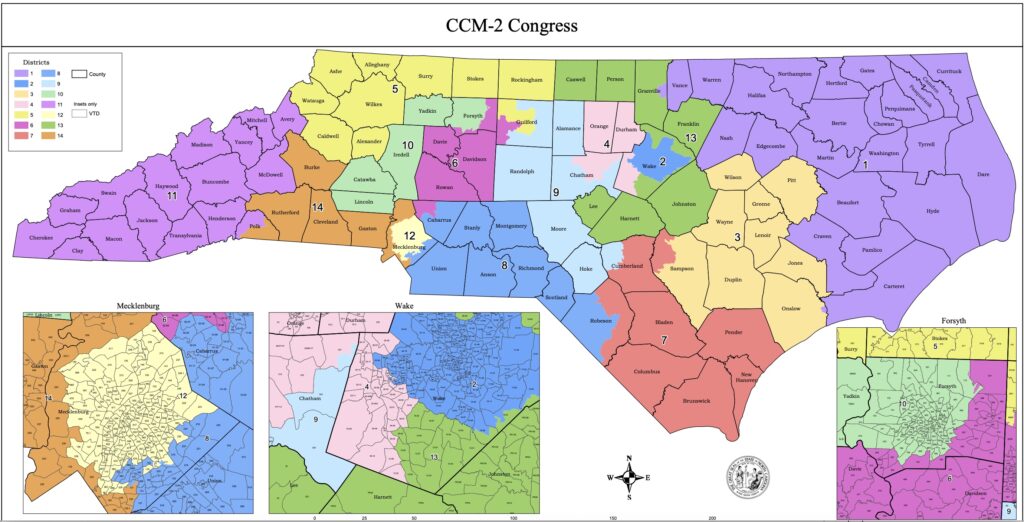North Carolina lawmakers on Wednesday gave final approval to a new congressional district map that will virtually guarantee the state sends an additional Republican to the U.S. House of Representatives, the latest salvo in an increasingly national mid-decade redistricting battle.
The measure, approved by the Senate earlier this week, will redraw a district in eastern North Carolina currently held by Rep. Don Davis (D). Davis’s district favored President Trump by a 51%-to-48% margin in 2024; the newly drawn district would have gone for Trump 55% to 44%.
In an at-times heated debate, Republicans emphasized that their motivation was entirely political, meant to increase the number of Republicans the state sends to Congress.
“The new congressional map improves Republican political strength in eastern North Carolina and will bring an additional Republican seat to North Carolina’s congressional delegation,” Rep. Brenden Jones (R) told colleagues.
Jones cited efforts by California Gov. Gavin Newsom (D), who is sponsoring Proposition 50, a measure to redraw his state’s political lines to add as many as five additional Democratic seats to the state’s already predominantly Democratic delegation.
“We’re here today because California and the radical left launched a full-fledged coordinated attack not only on North Carolina, but the integrity of democracy itself,” Jones said. “North Carolina will not stand by while they try to undermine the will of our voters and stack the deck in Washington.”
Jones did not mention Texas, where Gov. Greg Abbott (R) signed legislation earlier this year substantially redrawing congressional district lines to add five new Republican seats to the delegation. Missouri Gov. Mike Kehoe (R) also signed legislation meant to dismantle a Kansas City-based Democratic district, though opponents of that plan are collecting signatures to force a referendum that would put that plan on hold.
Republican governors and legislators in Louisiana, Kansas and Indiana are also considering their own mid-decade maps. Ohio lawmakers must draw new maps ahead of the 2026 midterm elections, a process that will be entirely controlled by Republicans as well.
U.S. House Minority Leader Hakeem Jeffries (D) has urged Illinois lawmakers to return to Springfield to adopt new maps, though it is not clear whether the political will to do so exists among Illinois Democrats.
Democrats objected to a plan they painted as a nakedly partisan gerrymander.
“What started as a political power play in Texas has turned into a national redistricting war,” Rep. Dante Pittman (D) said on the House floor. “This action is further dividing a deeply divided nation, but more acutely it unnecessarily divides communities.”
The measure will take effect without Gov. Josh Stein’s (D) signature. When Democrats controlled the North Carolina legislature in the 1990s, the General Assembly approved a constitutional amendment specifically excluding redistricting legislation from the governor’s veto.
The House passed the bill on a party-line vote, 66-48.

(Courtesy of the North Carolina legislature.)
The maps move several conservative counties from District 3 to District 1, which covers much of the state’s so-called Black Belt because of the minority-majority counties there. Democrats have pressed the case that the change is racist. Davis, the current incumbent, is Black.
Jones said the legislature had specifically instructed the redistricting consultant hired to draw new map lines not to consider race as a factor in drawing district lines. Instead, he said, they had asked the Ohio-based strategist to consider political data allowed by the U.S. Supreme Court.
Clifton Dowell contributed to this report.

